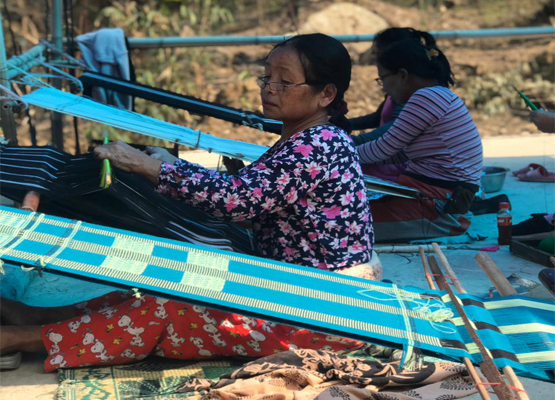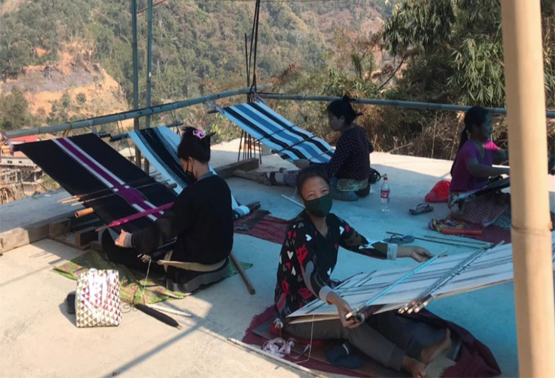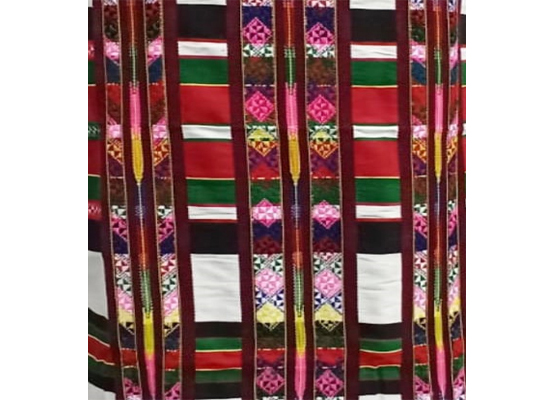
Weaving is one of the most important aspects of the cultural life of the people of Mizoram. The textile industry of Mizoram produces a wide variety of garments, which are used throughout the north-east. Many of the Mizos, especially the women, are skilled weavers. The women are taught and practise weaving from a very young age. The main article of clothing woven by the Mizo women is their traditional garment called Puan. Puans come in many kinds with each design, motif and colour carrying cultural significance to the Mizos. The Serchhip (Thenzawl) District and the Aizawl District are two of the main production centers in the state. Weaving is done by the womenfolk majorly on the loin loom and the garments are sold for income.
The Puan is occasionally also woven on a frame loom. While the weaving on the loin loom is done in two separate pieces of fabric which are later hand stitched together, the frame loom is equipped to handle fabrics of a larger width and thus weaving can be done all at once. The Puan is normally 60 to 65 inches in length and it takes more than a week to finish a plain Puan whereas a patterned Puan takes more than a month to be completed using a loin loom. The Puan is worn like a lungi and the usual way of wearing it is to wrap it around one’s waist. Another type of the Puan is the Puan Laisen, which is a traditional garment worn during weddings, festivals and dances. It is of a distinctive pattern with a red horizontal section running down the middle of the garment. Another one is the Puan Hruih which features a white background with black stripes. This attire is worn by both the Mizo men and women. The Puandum is a black fabric with red edges and the Tawlhlopuan is clothing given to the warriors. It has a black background with red, yellow and white stripes that represent bravery and ferocity of spirit.


The Mizo Puan, considered as the traditional clothing of the Mizo people, were once worn by both the men and the women. Now, it is mostly the Mizo women who wear it. The motifs woven by the Mizos have a traditional and cultural significance to each tribe. The ginger flower, tiger’s stripes, roses and stars are some of the classic motifs used in the weaving of the Mizo Puan. Earlier, weaving was done exclusively with cotton yarn, whereas now acrylic is slowly replacing cotton due to its attractive finish and durability. Now, frame looms and fly shuttles are slowly replacing the traditional loin looms for weaving of the Puans.

